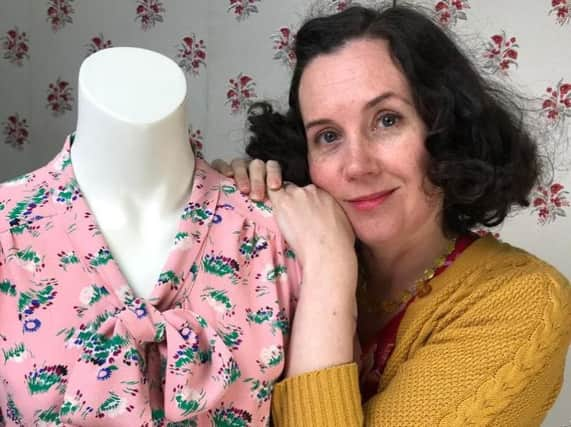How clothing rations changed fashion during Second World War


The dark days of the Second World War were so austere that the Government even dictated fashion trends in a desperate bid to save as much cloth as possible.
Garments manufactured during the era that met frugality regulations were marked with the CC41 label and were known as utility clothing.
Advertisement
Hide AdAdvertisement
Hide Ad“Many people now don’t know this brand of what the Government called ‘utility’ clothing ever existed,” explains Clare Quartermaine, creative director of Yorkshire-based vintage clothing websites The House of Foxy and Pretty Retro.
“But there were strict rules on what you could and couldn’t use or design when making clothes in the early 1940s.
“For instance, you weren’t allowed to have tiered skirts as that used too much fabric, imitation pockets were banned, you couldn’t use more than five buttons on one item and the rules just went on and on down to the tiniest detail.
What long-lost Second World War letters reveal about life at home for Yorkshire women“By 1942 you weren’t allowed to use more than 1.8m of material for a dress and to put that into context the typical dress in the 1950s used 3m of material. No-one dared to break the rules for if you did you’d be seen as not supporting the war effort. You just didn’t do it.
Advertisement
Hide AdAdvertisement
Hide Ad“Men also faced strict rules too. They weren’t allowed turn-ups on their trousers as that was deemed a waste of material, breast pockets were banned and only four buttons were allowed on shirts which only took them half-way down the front and that’s why they had to lift them over their heads to take them off.”
The utility clothing was hard-wearing and comfortable; the fabric had to last and practicality was a must, with such a huge number of people working to help the war effort.
But Clare, from Huddersfield, says it does not mean clothes of the era were dour, claiming fashion was far more colourful and creative than the “frumpy” looks that often feature in wartime dramas, including recent Channel 4 thriller Traitors.
D-Day 75 years on: Yorkshire remembers“I have material from that era and you wouldn’t believe just how bright the patterns are,” she says. “You had brilliant florals but also dresses with what’s known as conversational designs which are prints with pictures on them. I have a couple which have images of Robin Hood on them, for instance – and I can guarantee you’ll never have seen anything like them before.”
Advertisement
Hide AdAdvertisement
Hide AdThe 1930s and 1940s generation were also incredibly self-sufficient when it came to making clothes, using every inch of fabric during rationing to avoid wastage. And Clare feels there is one legacy from the era which has gone on to benefit women over the years.
“It became much more acceptable for women to wear trousers,” she says. “Before the war, that was definitely frowned upon. Wartime fashion made women so creative it empowered them to turn their attention to their own appearance and it was a real awakening of self-expression.
The glamour generation - how school prom fashion celebrates a new coming of age“It may have been known as the make do and mend generation but never forget that the women from that era had phenomenal self-taught skills. Most girls were taught from an early age and women became experts at reworking their existing dresses into more modern styles.
“A classic day dress could be quickly reworked via changing the neckline using gathers or tabs and were shortened leaving spare fabric for reworking sleeves or creating trimmed pockets.
Advertisement
Hide AdAdvertisement
Hide AdWhen most women think of the 1940s they think of the tea dress. The dress for dances was usually floral with a sweetheart neckline and puffed cap sleeves. There probably isn’t a more iconic look associated with a decade than this one.
“The 1940s clothing gives us a perfect example of how much fashion is influenced by politics, culture and social situation. This decade saw much change.”